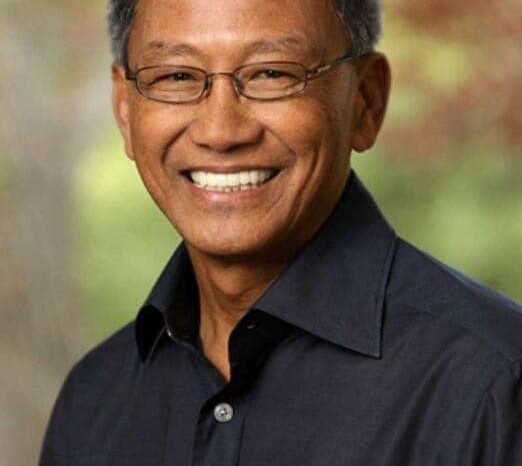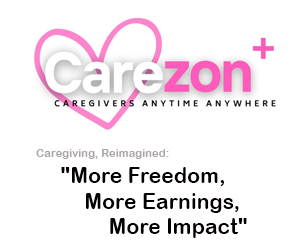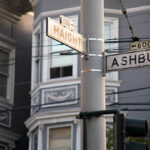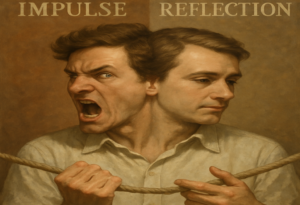The Fading Memory of Haight-Ashbury: Counterculture, Vietnam, and the Lasting Legacy on Northern California’s Soul

In the heart of San Francisco lies a storied intersection—Haight and Ashbury—once the epicenter of a cultural revolution that would ripple across generations, disciplines, and ideologies. Though today it bears the faded look of tourist novelty and gentrified decay, Haight-Ashbury was, in the 1960s, a crucible of rebellion, creativity, and spiritual awakening. Here, in the shadow of the Vietnam War and the rise of psychedelic consciousness, emerged a movement that would forever transform the cultural and intellectual landscape of Northern California.
From the music of the Grateful Dead and Janis Joplin to the philosophies of Alan Watts, from the swirling hallucinations of LSD to the stillness of yoga and meditation, the Haight-Ashbury era left an indelible mark. Yet, like all revolutions, time has sanded down the sharp edges. This article explores the fading memory of that moment and its ongoing legacy—particularly in the realms of music, psychedelic therapy, spiritual practice, and holistic health.
The Counterculture Awakens: Haight-Ashbury and the Seeds of Rebellion
The 1960s counterculture did not arise in a vacuum. It emerged in reaction to a confluence of national traumas and generational disillusionment: McCarthyism, civil rights struggles, conformity, and most powerfully, the Vietnam War. Young Americans increasingly found themselves at odds with the prevailing values of consumerism, militarism, and blind patriotism.
Haight-Ashbury, a bohemian neighborhood in San Francisco, became the laboratory of this discontent. Drawn by cheap rent, a tolerant atmosphere, and a vibrant art scene, writers, artists, musicians, and seekers of all kinds congregated there. In 1967, the “Summer of Love” crystallized this energy, drawing nearly 100,000 young people to the neighborhood. They came seeking love, peace, and transformation—but also to protest a war that had cost thousands of young lives in a far-off jungle.
Vietnam and the Fracturing of the American Psyche
The Vietnam War served as both backdrop and catalyst for the counterculture. Unlike previous conflicts, Vietnam was televised, its horrors beamed nightly into American living rooms. Images of burning villages, body bags, and napalm-scarred children shattered patriotic illusions.
Draft resistance, anti-war protests, and campus uprisings swept across the country. In the Bay Area, UC Berkeley’s Free Speech Movement and marches across the Golden Gate Bridge symbolized a youth refusing to be complicit. For many, especially veterans who returned disillusioned and broken, Haight-Ashbury offered something America could not: a chance at healing and meaning through alternative paths—psychedelics, spirituality, and community.
The trauma of Vietnam did more than ignite protest. It gave rise to an entire generation of seekers. Many veterans and draft-dodgers turned to the very things the establishment feared most: LSD, Buddhism, communal living, and radical self-exploration. The psychedelic trip, in many ways, became a metaphorical journey out of the psychic rubble of war.
The Rise and Resonance of LSD
Lysergic acid diethylamide—LSD—was not simply a recreational drug; it was seen as a tool for transcendence. Pioneers like Dr. Timothy Leary at Harvard and Ken Kesey of the Merry Pranksters popularized its use, often framing the psychedelic experience as a gateway to expanded consciousness.
Kesey’s Acid Tests, frequently accompanied by the music of the Grateful Dead, turned Haight-Ashbury into an ongoing experiment in consciousness. The line between audience and performer blurred; art was not separate from life but a living, breathing force.
LSD inspired more than hallucinations—it shattered paradigms. Artists painted new realities, musicians composed from altered states, and spiritual seekers reported ego death and cosmic unity. In an age of war and repression, LSD was, paradoxically, both escape and engagement: a means to confront one’s deepest fears and desires, and to reimagine society itself.
he legacy of LSD is profound and resurging today. Psychedelic therapy, now being revisited in clinical trials at institutions like Johns Hopkins and UCSF, draws directly from the 1960s ethos. The idea that the mind can be re-wired, that trauma can be transcended, and that mystical experiences have therapeutic value, stems from this era.
Alan Watts, Zen, and the Arrival of Eastern Thought
No single figure bridged East and West as elegantly as Alan Watts. A philosopher and former Episcopal priest, Watts became the voice of Eastern mysticism for Western audiences. Living in the Bay Area, he translated Zen, Taoism, and Vedanta into accessible language, offering a spiritual path unencumbered by dogma or guilt.
His radio broadcasts and bestselling books like The Way of Zen and The Wisdom of Insecurity found eager audiences among those disillusioned by Christianity and eager for something holistic, experiential, and non-hierarchical. Watts did not preach salvation but presence. In a world burning with war and racial unrest, his calm voice offered a radical alternative: be here now.
Watts’s influence continues to ripple through Northern California, especially in the realms of yoga studios, meditation centers, and the growing interest in mindfulness-based stress reduction. His legacy is carved into the DNA of Silicon Valley’s spiritualism, Big Sur’s retreats, and even the user-centered philosophy of design that characterizes Apple and Google.
Yoga and the Holistic Health Movement
It’s difficult today to imagine a time when yoga was exotic in the West, but the 1960s saw its slow, powerful introduction through figures like Swami Satchidananda, Paramahansa Yogananda, and later, B.K.S. Iyengar. The counterculture embraced yoga not as exercise, but as a spiritual path—one that united body, mind, and soul.
San Francisco became a hub of yoga practice, spawning studios, teacher trainings, and eventually the wellness movement. This wasn’t just about stretching—it was about rejecting Cartesian dualism, reclaiming bodily intuition, and integrating breath, movement, and awareness.
Likewise, health food stores, macrobiotic diets, organic farming, and herbal medicine found new relevance as young people questioned the toxicity of industrial agriculture and processed food. The seeds of today’s multibillion-dollar wellness industry—kombucha, ayahuasca retreats, veganism—were planted in these backyards.
The Esalen Institute, perched on the cliffs of Big Sur, became the mecca for this convergence. Offering workshops in bodywork, encounter groups, psychology, meditation, and altered states, it drew thinkers like Abraham Maslow, Joseph Campbell, and Stanislav Grof. It remains a touchstone for spiritual renewal and interdisciplinary exploration.
Music as Message and Medicine
Haight-Ashbury was the cradle of a sound that defined a generation. The Grateful Dead, Jefferson Airplane, Big Brother and the Holding Company, and Santana weren’t just rock bands—they were spiritual conduits. Their concerts were less performance and more ritual, a shared communal experience that fused acid, improvisation, and radical love.
Lyrics questioned war, praised love, and celebrated inner journeys. Woodstock, Altamont, and the Monterey Pop Festival served as mass liturgies of a new belief system. Janis Joplin wailed her soul out; Jimi Hendrix set his guitar on fire as if it were an offering.
This era cemented Northern California as a musical frontier. Even decades later, its spirit informs festivals like Burning Man and Outside Lands. The Dead’s legacy, in particular, lives on through jam bands, record archives, and Deadhead communities that remain among the most devoted fanbases in music history.
The Fade: Commercialization, Fragmentation, and the Return to the Center
By the 1970s, the dream of Haight-Ashbury had begun to unravel. The neighborhood, overwhelmed by transient youth, became infested with crime, addiction, and despair. LSD turned dangerous, heroin entered the scene, and the utopian vision gave way to tragedy. The war, too, wound down, leaving a generation divided between trauma and disillusionment.
The establishment, recognizing the economic potential, co-opted elements of the counterculture. Yoga became fitness. Music became product. Psychedelics became taboo, criminalized under Nixon’s “War on Drugs.” Watts died in 1973. Janis and Jimi were already gone.
But even as the memory faded, the seed had been sown.
The Legacy: A Northern California Reimagined
The legacy of Haight-Ashbury and the Vietnam-era counterculture is everywhere in Northern California if you know where to look. In Silicon Valley’s humanistic tech design principles. In Marin County’s yoga studios and kombucha cafés. In the psychedelic renaissance now finding footing in respected research labs. In the rise of eco-consciousness, permaculture, and green architecture.
Even in the corporate sphere, mindfulness has gone mainstream—Google’s “Search Inside Yourself” program owes more to Alan Watts than to Steve Jobs. And though the Haight itself may feel like a shadow of its former self, the ethos of peace, self-inquiry, community, and transformation permeates the entire Bay Area.
And it stretches beyond geography. The idea that another world is possible—that you can tune in, turn on, and drop out of toxic systems—remains a potent, if sometimes romanticized, ideal. In moments of political despair or climate anxiety, it resurfaces. Sometimes in yoga class. Sometimes in a song. Sometimes in the quiet decision to live more mindfully.
Conclusion: Remembering and Reimagining the Dream
History often reduces movements to their aesthetics. Tie-dye shirts. Patchouli. Lava lamps. But the soul of Haight-Ashbury was never its style—it was its search. The young people who gathered there weren’t just rebelling against something; they were reaching for something more beautiful, more authentic, and more whole.
Today, as the world faces new crises—climate collapse, AI-driven alienation, mental health epidemics—the lessons of the counterculture feel more relevant than ever. Question everything. Seek connection. Embody peace. Heal inwardly and act outwardly.
The memory of Haight-Ashbury may fade, but its spirit is still within us. Not in a specific place, but in a mindset, a willingness to dream and to risk everything for a better way of being.
As Alan Watts once said, “You are the universe experiencing itself.” That simple truth—so radical in its time, so needed in ours—is the true inheritance of that beautiful, fleeting, revolutionary summer.









